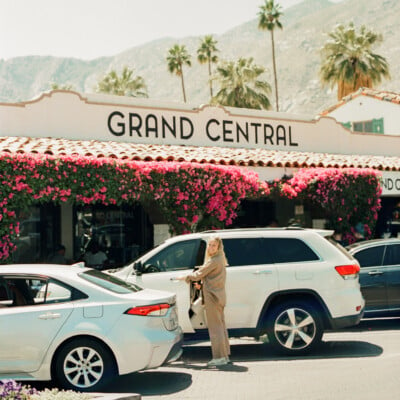Last month, Camille and I took a whirlwind trip to Charleston. For both of us, it was our first ever visit to South Carolina, and we quickly learned that to uncover Charleston’s history is to be there. Around every corner lies a story, and each block possesses a personality all its own, so much so that as a visitor, you’d have to try to miss out on the history that the Southern city has to offer. From the humid air to the inspired cuisine to the horse-drawn carriages trotting on cobble-stone streets, just a short trip to Charleston delivers a feast for the senses unlike any other American town I’ve visited.

Of course, it’s no secret that the city’s true claim to fame is its historic architecture. I anticipated uniform antebellum houses in pastel colors and plantation homes predictably restored. But what I didn’t expect was for each and every structure to be completely unique, telling a story of Charleston different from all the rest — history reimagined with each passing property. And yet, it wasn’t until I visited three of Charleston’s most iconic institutions that I discovered the biggest surprise of all: in this city, historic architecture doesn’t just mean “colonial.”

Upon first glance, 492 King Street doesn’t look very different from its pre-renovation self — a peeling facade in a rusted rose hue, centuries-old trim framing the windows and the rooflines, and a fading hand-painted sign on the building reading “Leon’s Mens & Boys Wear,” reminiscent of its previous tenants. It’s all a testament to the notion that when it comes to a building’s architecture, time plays both a harmful and helpful role.

Dating back to the 1800s, 492 King Street boasts all the historic qualities you’d hope to find in a Charleston restaurant. But thanks to a thoughtful restoration by Relish Restaurant Group and architect Reggie Gibson, the building — which sat abandoned and dilapidated for nearly 30 years before Relish’s intervention — also tells the story of its trying past with pride.
It housed a mainstay of Charleston’s early economy for many years as a clothing store, it survived one of the most powerful hurricanes in South Carolina history, and perhaps most challenging of all, it sat there, unattended to and unchanged for decades. A meal in the light-filled space means that not only will you enjoy live music and a tasty New American menu, but you’ll get the chance to soak up an authentic piece of Charleston’s history too.

A cool eight minute walk away, you’ll find yourself on the steps of another awe-inspiring property. The Dewberry is a large, luxury hotel in the heart of downtown, and frankly, it’s the exact opposite of what I expected to find in Charleston. Marble floors, wood paneled walls, brass details, low slung furniture — we’ve entered Mad Men territory, folks, and I personally am not complaining.

One look up at the building’s impressive facade and I couldn’t wait to walk through the rotating door standing between its modern lobby and Marion Square just outside. Formerly a federal building, The Dewberry’s exterior is a combination of vintage marble and a complementary lime-washed brick.

Inside, 155 rooms and suites uphold the building’s midcentury character, while Henrietta’s and The Living Room (the hotel brasserie and bar, respectively) add color and texture to the otherwise minimal ground floor. With this level of style and sophistication, it’s easy to see why The Dewberry has quickly become a luxury escape in the heart of downtown Charleston.

If historic architecture is what you’re looking for, Oak Steakhouse is sure to deliver in the most traditional sense of the word, alongside an equally classic menu. If the fact that this restaurant resides inside a mid-1800s bank building isn’t convincing enough, picture this: bright white exterior, three levels of ornate arched windows, 20-foot ceilings, and 150 year old pine floors. Preserved to perfection, it’s the stuff of restoration dreams, and it’s so quintessentially Charleston.

In this stately setting, a special dinner paired with wine from Oak’s expansive selection is only bolstered by the warm, rich architecture that surrounds. But if you ask me, the one thing that could make dining at Oak Steakhouse Charleston better? Seating out front that allows you to take in its impressive facade, while still enjoying its terrific cuisine.

Topping the ranks repeatedly as one of the country’s — and the world’s — best cities, Charleston certainly has a reputation to its name. And while I may have thought I knew all there was to see in the Southern city, the truth is that once you’ve witnessed its beauty, relished its charm, and felt its energy for yourself, you quickly realize that no photos or storytelling can quite compare to the magic of visiting Charleston.




